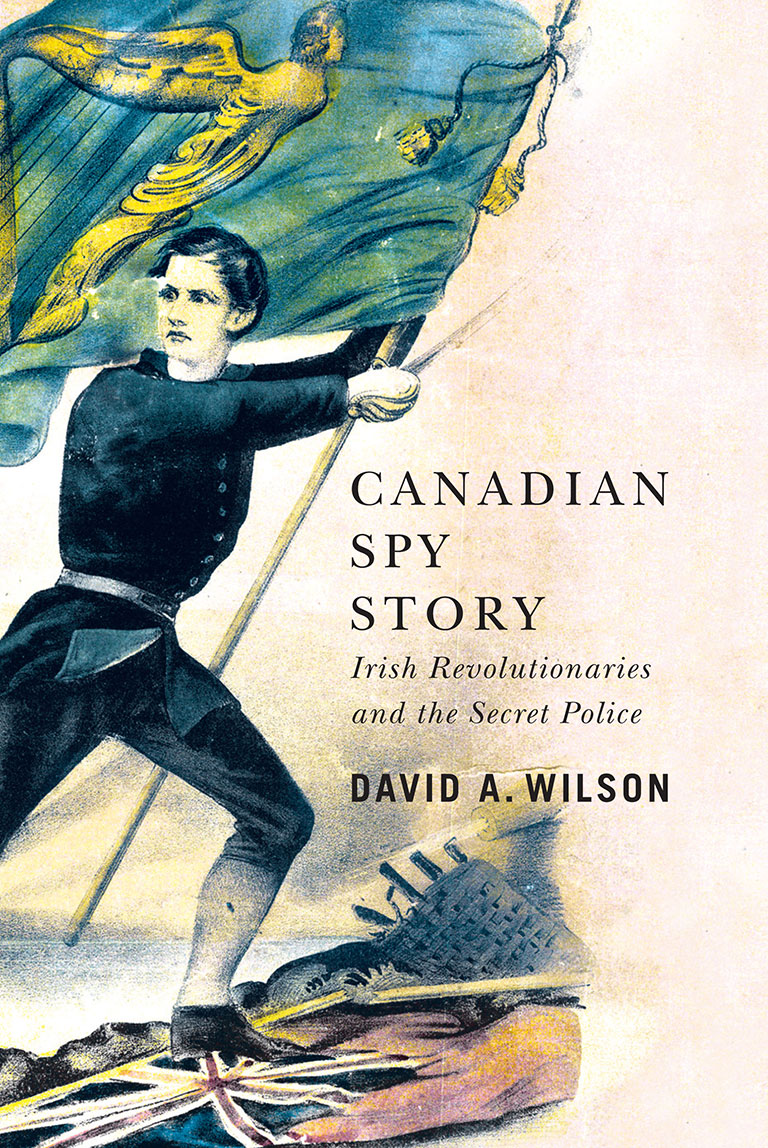Canadian Spy Story

Canadian Spy Story: Irish Revolutionaries and the Secret Police
by David A. Wilson
McGill-Queen’s University Press
568 pages, $39.95
Those who feel dismayed at the prospect of seeing King Charles III’s face on a future loonie will find many a kindred spirit in the pages of Canadian Spy Story: Irish Revolutionaries and the Secret Police. The thick, hardcover volume bristles with Fenian militants and republican agitators bent on making Canada a battleground in their mission to free Ireland from the yoke of British rule.
“Chicago … was a staging ground for an Irish revolution; along with drilling, the Fenians were supposedly raising money to buy a privateer, were sending men to Ireland … and were buying large numbers of arms at cut-rate prices from the American government,” notes author David A. Wilson, paraphrasing reports by Patrick Nolan, a Canadian government agent tasked with spying on the Fenians. “Although they were focusing on Ireland, Nolan reported, the Fenians also had Canada in their sights.”
The bulk of the book’s action takes place in the 1860s, a decade when the United States was riven by civil war and the British North American colonies of the Province of Canada (which included Canada West and Canada East), Nova Scotia, New Brunswick, and Prince Edward Island were considering banding together in Confederation. Until the mid-1800s, Canada West — founded mainly by monarchists and Loyalists — had been overwhelmingly Protestant. But the potato famine of the 1840s, known in Ireland as the Great Hunger, or an Gorta Mór, had driven tens of thousands of poor Irish Catholics to Canadian and American shores.
In Toronto, Irish Catholics and Protestants often came into conflict, sometimes violently, as Catholics endured discrimination and Protestants suspected them of disloyalty to King and country. Protestant fears were expressed in a Toronto Globe column, quoted by Wilson, that claimed that the city “had within its very midst an organised, illegal, armed body of conspirators, who, at any moment of the darkness, might perpetrate deeds of horror and of bloodshed at the thought of which one’s heart sickens.”
Although the majority of Catholic Irish immigrants blended peacefully into their new country as labourers or farmers, a militant minority harboured such bitterness toward Ireland’s oppressive British rulers that they were willing to devote themselves the Fenian cause.
If they wanted to free Ireland, why would the Fenians attack Canada? This is a question the book explores at some length, as the story wends its way through beery pubs, underground meeting halls, and stuffy government offices where Canadian officials pieced together fragmentary intelligence reports in an effort to understand the threat against them.
Essentially, a successful attack on the British North American colonies would serve as powerful propaganda, showing the strength of the Irish independence movement and, not incidentally, motivating Irish Canadians and Americans to donate to the cause. In this scenario, one or more of the British North American colonies might either become an independent republic or join the United States.
On a grander scale, some in the Fenian movement harboured hopes that an attack on Canada from American soil would draw the British and Americans into a war against each other, siphoning troops away from the United Kingdom and thereby creating an opportunity for a revolutionary uprising in Ireland.
Readers of Wilson’s book become spectators to the civilian and military game of dodge-and-feint between the Canadian government, led by Sir John A. Macdonald (then the joint premier of the Province of Canada), and its Fenian foes, led by Toronto tavern keeper Michael Murphy. Surrounding each is a large cast of spies, soldiers, and ideologues, all ultimately fighting for or against the supremacy of the British monarchy.
Wilson, a professor of Celtic studies and history at the University of Toronto, does an admirable job of corralling these unruly characters into a densely packed but eminently readable tome. He helpfully provides readers with a list of dramatis personae that includes a biographical paragraph on each of the main players.
At a time when the role of the British monarchy has once again come into question in Canada, Canadian Spy Story offers interesting historical background about a period when a small group of committed Irish nationalists swam against the Loyalist tide and sought to draw Canada into the uprising against British rule.
With 7 uniquely curated newsletters to choose from, we have something for everyone.
Themes associated with this article
Advertisement




